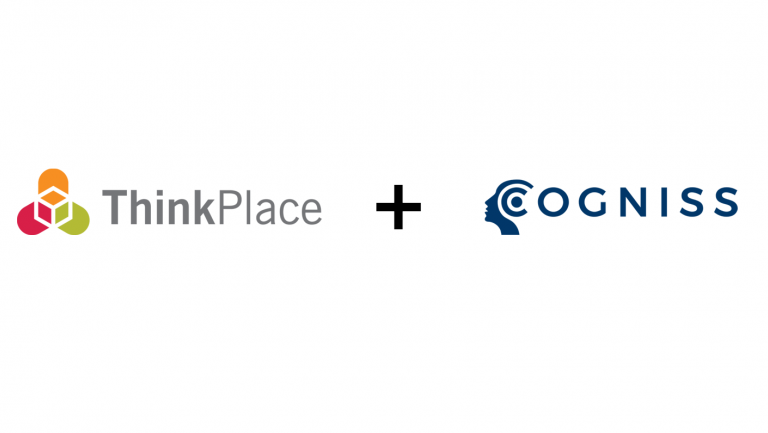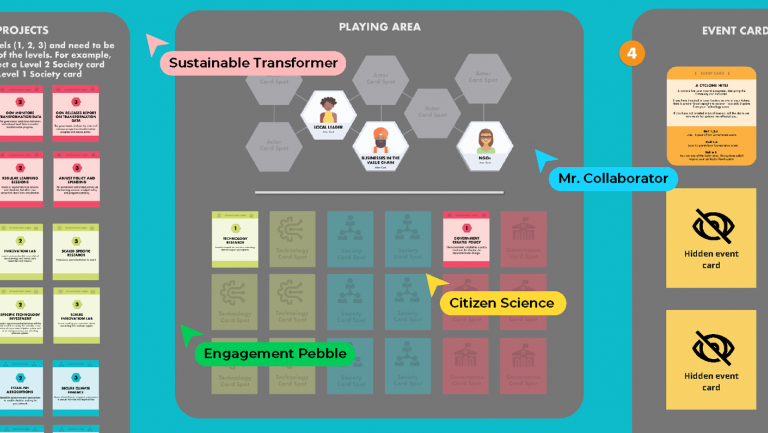Sign up for our monthly newsletter

The 6 big myths that get innovation labs all wrong. BUSTED.
The great thing about working with Innovation Amplified -- our world-leading methodology for convening and running social innovation labs -- is you get exposed to a huge range of leaders, organisations and people, across different sectors and worldviews.
Throughout all of those rich conversations there are two things that keep jumping out at me.
- The sense so many people have that they need to do something different to break through problems that are hopelessly gridlocked.
- The frustration that comes from having no idea how.
Across all these conversations I see some uncertainty that often stems from simple but powerful myths about innovation labs. And like most myths... they are mostly wrong.

Myth 1: This sounds like Shark Tank. And I’m not a shark…
If you’re working in an area where complex problems reign -- whether it’s suicide prevention or generational poverty, the circular economy or coronavirus supression -- learning to adopt and employ innovation frames, mindsets and tools will be a huge benefit. Too often, though, people feel that the language of innovation is not relevant to them or their challenges. Tech bros, shiny startups and pitch decks aimed at venture capital spring to mind for many when you mention innovation labs. That’s hardly ever the sort of context we operate in, as we help leaders mobilise to drive positive change.
Innovation Amplified is primarily about social transformation. And to achieve that, particularly with the type of complex problems we face today, you need a diversity of people in the room. That means having to convince people who aren’t confident that their voice needs to be considered. It means making space for people whose voices have previously been left out. If you care deeply about what’s happening in your world but don’t feel like you’re the type of person who would usually be found at an innovation lab… you’re exactly the right person.
Download ThinkPlace's special report based on a recent study of the state of social innovation and read how Innovation Labs can help public and private sector businesses to systematically translate a vision into reality.
Myth 2: Aren’t labs for people who are making something?
Yes, but that’s you! There’s a common misconception that innovation labs are good for making physical products (like pieces of technology). But social innovation labs are more like their scientific antecedents. They are a testing ground for ideas, a safe place where experimentation -- supported by a rigorous method -- can translate into new ways of doing things.
In some instances that may result in new products or new companies spinning off. More often it results in new projects, new collaborations and interventions. All of it rests on a simple idea: the problems that your organisation faces can’t be tackled by you alone.

Myth 3: Even if I knew who could help, I couldn’t get them to show up.
We have little trouble convincing people they can’t single-handedly tackle the complex problems their organisation or sector (or the world) faces. They know it. It’s sometimes harder to get leaders to believe they have the power to identify, assemble and mobilise a coalition of the willing. “I can’t gather all the CEOs and senior leaders needed to tackle this problem,” we’ll sometimes hear. “They just wouldn’t come to a 2-day event.”
How do you identify the right people and get them to show up? We call this “convening power” and it’s a huge part of what we do.
One way is to make sure the sessions are, themselves, transformative. More interesting, more fun, more challenging than anything you’ve been involved in previously. We use special guests to share their stories and create a unique environment (whether it’s a top executive from Tesla, or an inspiring Olympic athlete).
Another way we help you secure high-level buy in from the right people is by inviting them to help design the lab itself. Most times we do not come to key stakeholders with an invitation to an event that is finalised. Instead, we engage them early. What kind of lab would they like to be part of? What are the complexities their organisations are grappling with? How might we incorporate their needs into the process we are designing?
It is true that building your participant base is harder at the start. That’s why you need expert help. But our experience shows, time and again, that once people get a taste of Innovation Amplified they want more. By the time your lab has been running for a while it is usually oversubscribed.
Myth 4: Innovation labs are an open-ended drain on resources.
For some people, an innovation lab sounds fantastic... in a fantasy world featuring unlimited resources.
Fear not. The methods and mindsets behind Innovation Amplified are highly scalable. It’s true that we sometimes run multi-year labs that span entire sectors and bring together hundreds of people for system-level transformations. But we can also run smaller pilot labs around much more focused questions or challenges.
The idea of the innovation lab as a drain on resources can be strong. It’s funny because, out of all of these myths, it’s probably the one that’s most unfounded. When we do retrospective analysis with lab participants one truth comes up repeatedly: The problem holding back sector-wide positive change is hardly ever money.
In most cases there is money in the system. The key questions are: What are the opportunities to innovate in this complex space? And, where do we begin? Innovation Amplified draws together all of the stakeholders in a system, aligns them to a common purpose and gives them tools and mindsets to allow radical new forms of collaboration.
Some actors in the system might have the power to fund initiatives. Others might have the power to change regulatory environments. To speak for consumers or represent frontline service workers. All will be important. Innovation labs don’t drain funding, they unlock it. They direct resources away from silos and cul de sacs and they connect them to new possibilities where impact and reach can be exponentially multiplied.
Various funding models can support a lab. In some cases we’ve used a membership model, where participants pay a joining fee. Other times we’ve run labs where government or other funding bodies have covered thecost or where specific events within a lab structure have been ‘sponsored’ by industry partners. The format is flexible. And so are we.
Download ThinkPlace's special report based on a recent study of the state of social innovation and read how Innovation Labs can help public and private sector businesses to systematically translate a vision into reality.
Myth 5: This sounds interesting but it’s just not how things are done in my sector
When we bring the tools and mindsets of innovation to operate in new arenas magic happens. It’s this approach that is helping transform Australia’s energy system, via the Australian Renewable Energy Agency’s A-Lab. It is helping transform the water system, through W-Lab.
But it’s also an approach that also allowed the ACT Government to rethink the family violence system to be more effective and better connected. Innovating in that challenging social space meant listening to the voices of survivors, of caregivers and support workers but also of perpetrators. Innovation Amplified works wherever there is the need for social innovation and positive change. And that’s basically everywhere.

Myth 6: Our problems are urgent. We don’t have time for this.
It’s natural that leaders under pressure want to act fast. In most of the cases we see, though, continuing to act in the same conventional ways is not going to resolve problems that have stubbornly resisted such action for decades.
Innovation Amplified can be uncomfortable at first. Most people’s instinct is to spend 20 per cent of their time examining the nature of the problem and then 80 per cent of time working on a fix.
We flip that entirely. Spending 80 per cent of your time understanding and scoping the problem can feel like hard work. But it is work that pays off. All of that time spent investigating and mapping is also time spent assembling the right voices and building their skills and relationships. Over time, they’ll become invested in a common purpose and perfectly equipped to make something together. That means when you DO make something, it’ll be the right thing. It’ll work. And you won’t be back at square one, looking for another quick fix.
Download ThinkPlace's special report based on a recent study of the state of social innovation and read how Innovation Labs can help public and private sector businesses to systematically translate a vision into reality.








